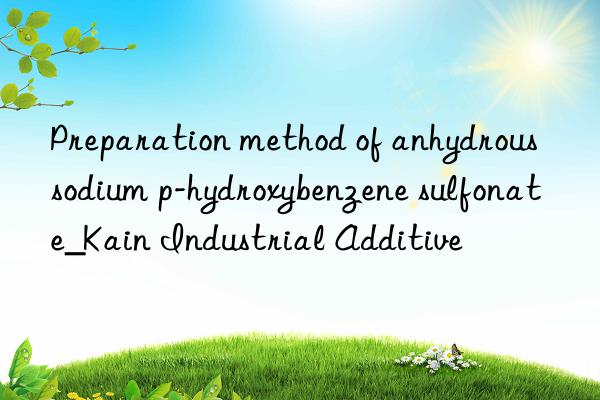
Background and overview[1]
Anhydrous sodium p-hydroxybenzene sulfonate, molecular formula: C6H5NaO4S, white crystalline powder, soluble in water, hot alcohol and glycerol. Sodium p-hydroxybenzene sulfonate is a very important intermediate in organic synthesis and pharmaceutical industry. Its research value and commercial value that cannot be ignored have been gradually discovered by people. However, the original production process of sodium p-hydroxybenzenesulfonate is complicated, the yield is not high, and the pollution is serious. At present, environmental pollution problems have become a restrictive factor that seriously affects the development of sodium p-hydroxybenzenesulfonate.
Preparation[1]
Anhydrous sodium p-hydroxybenzene sulfonate is prepared as follows:
(1) Preparation of SO3 gas: The SO3 gas used in the experiment was generated by an SO3 gas generator. The specific method is: add 200ml of 65% oleum, a small amount of zeolite and 20gP2O5 is heated with an electric heating mantle. The SO3 gas produced is diluted to 7% with nitrogen and then enters the sulfonator for sulfonation reaction.
(2) Sulfonation reaction: In the experimental kettle-type bubbling reactor, add a certain amount of phenol and a certain amount of positioning agent, and pass in the diluted SO3 gas (SO3 The amount of gas slightly exceeds the theoretical amount required for the reaction). Use a super thermostat to thermostat the reactor in a water bath to control the reaction temperature while stirring. As the reaction proceeds, the viscosity of the reactants gradually increases and the color gradually turns yellow. After the reaction is completed, it is aged for a period of time. At this time, the reaction liquid becomes a light yellow transparent liquid. Take the liquid and conduct thin layer chromatography analysis. When the ratio of each spectrum on the thin layer chromatography does not change, stop aeration, remove the reactants, stir gently with a glass rod, and cool. At this time, crystals precipitate, perform suction filtration, and take the suction filtration. The remaining crystals are available for later use.
(3) Refining of anhydrous sodium p-hydroxybenzene sulfonate: Dissolve the filtered crystals in 200 ml of glycerin aqueous solution. The dissolved solution is subjected to steam distillation, and the distillation is analyzed by thin layer chromatography. Stop distillation when no o-hydroxybenzenesulfonic acid precipitates out of the product. The unvaporized solution was neutralized with 30% Na2CO3 aqueous solution to pH=8, and then distilled under reduced pressure to obtain a massive solid. Dissolve and filter the massive solid with DMF, and distill the obtained filtrate under reduced pressure to obtain high-purity sodium p-hydroxybenzene sulfonate.
Main reference materials
[1] Research on the synthesis process of sodium p-hydroxybenzene sulfonate

 微信扫一扫打赏
微信扫一扫打赏

